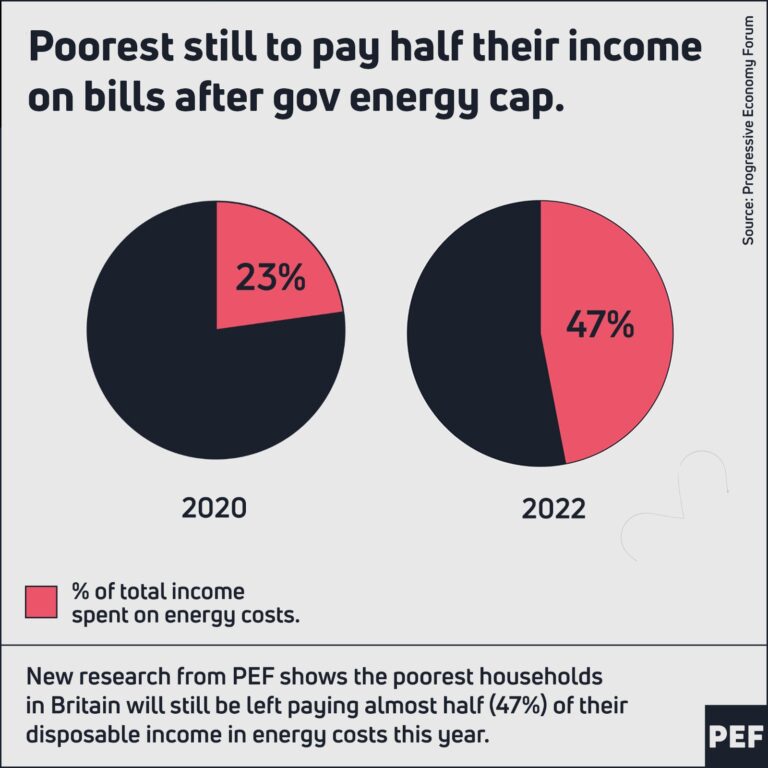Much has been written about the UK economy’s stagnating productivity – but is it that big a problem? The problems with measuring productivity have serious potential implications for this ‘productivity puzzle’.
Executive summary
Productivity measures seek to indicate the effectiveness of generating outputs from inputs. Labour productivity, output per unit of labour input, is the basis for the most commonly used measures. For at least two decades experts and non-experts have focused on a perceived slow growth, even stagnation of productivity in the UK economy.
Output can be divided into its three major categories, 1) goods (21% of GDP), 2) private services (46%), and public services (33%). The major productivity measurement issues in these categories are summarised in the table below.
| Aggregate output = | Goods + | Private (market) services + | Public (not marketed) services |
|---|---|---|---|
| Adjusting for capacity utilisation. | Using a consistent method to distinguish inputs from final output. | Avoiding double counting; measuring output independently of labour input. | Estimating market value in absence of market exchange; until the early 2000s, the ONS treated public services productivity as constant. |
Out of these categories, public services have consistently shown the slowest rate of productivity growth in recent years. The difficulties in measuring outputs and inputs in public services, however, mean that aggregate productivity growth may suffer from systematic downward bias. Since the measures of public sector input and output have been used for only a few years, we would expect the downward bias to have appeared recently, which it has. The possibility exists that recent slow growth of UK aggregate productivity is due to measurement error of public services productivity. Improving measurement of public services productivity should be a priority under a Labour government.
Introduction
When using an economic indicator for policy purposes, the central considerations are (a) what policy outcome is sought and (b) whether the indicator reliably monitors that outcome. This note inspects measures of aggregate productivity with the purpose of identifying what they indicate. Whether and how a calculation of aggregate productivity should be used for policy monitoring depends, however, on the outcome sought and thus lies beyond the scope of this paper.
Productivity measures seek to indicate the effectiveness of generating outputs from inputs. Labour productivity, output per unit of labour input, is the basis for the most commonly used measures. For at least two decades experts and non-experts have focused on a perceived slow growth, even stagnation of productivity in the UK economy.
Concern has focused on a specific statistic: output per unit of labour for the economy in the aggregate, or “aggregate productivity”. The measurement of this statistic might seem straight-forward; one takes the total production of goods and services and divides by the labour employed in their production, measured in number employed or hours worked, to arrive at a measure. In practice this approach, with total output as approximated by gross national product in the numerator and total labour time in the denominator, is a problematic statistic.
To explain why [GDP/Labour input] is a problematic measure and why no government statistics office uses it, I begin with the simplest hypothetical case: an economy that produces only one output and employs only one type of labour. In this imaginary case there is no need to aggregate because there is one output and all labour inputs are the same.
Demand effects
If Pi is the price of the one output in year i, Q is its quantity, and L is the number of workers involved in producing Q, by definition:
- GDP = PiQ
- Labour productivity = PiQ/L
If the current year is noted as c and the base year as b,
- Constant price labour productivity = (PcQ/L)/Pb
In this very simple case I include price deflation only for completeness. It is unnecessary because there is only one output. In an economy that produces only homogeneous maize, production is tonnes of maize divided by the labour that produces it, measured in hours, i.e. Q/L.
We should point out that aggregate productivity will tend to be closely related to per capita income. Let total population be N.
- Constant price per capita income = Q/N
If the labour force engaged in production is a constant fraction of the population, then productivity and per capita income are strictly linked over time. If N is population, then by definition L = αN. For the UK, following the guidelines of the Office of National Statistics, α is about 0.63 or 63% of the total population (taking out the unemployed). That percentage implies that in 2019 if accurately measured, per capita income was about 63% of labour productivity.
For many reasons per capita income and labour productivity would not be so strictly related even in this simple case. At this early stage of the analysis, the rate of unemployment provides the most important reason for which changes in per capita income and labour productivity might diverge. I now make the simple but unrealistic assumption that the maximum labour force is fixed at L* (those aged 16-64, about 34 million in 2019), and actual employment is L (about 32.5 million in 2019). Similarly, maximum output is Q*and actual is Q. Then, Q/Q* is the index of maximum capacity and L/L* is the employment rate. The maximum, full capacity value for both is 1.
The first analytical issue of measurement arising from this simple case is whether actual output changes proportionally to actual employment (whether it is always the case that Q/Q* = L/L*). If true, then we can ignore the extent to which the economy is at, close to or well below its maximum output for the purposes of measuring productivity. In the short run, demand determines the level of output and employment. Ignoring how close the economy is to maximum output is thus equivalent to concluding that the level of demand has no impact on aggregate productivity.
Few if any economists would agree that employment and output move in a proportional manner. Guided by marginal productivity theory, mainstream economists would expect Q/L to decline as employment rises. Heterodox economists, especially Keynesians, would predict the opposite. Moving closer to full capacity results in more effective use of plant and equipment. Empirical evidence strongly supports the heterodox view, that productivity is “pro-cyclical”. In the upturn of the economic cycle, output rises and aggregate productivity also rises. In the downturn aggregate productivity falls.
Even if the economy were so simple as to have one output and one type of labour, the observed ratio of output to labour would not be a reliable measure of aggregate productivity because it ignores demand effects.
This is an important conclusion because the ONS measures of labour productivity do not make adjustments for demand, as fellow Council member Geoff Tily has demonstrated and I have also analyzed.
Intermediate vs final outputs
Measuring aggregate productivity in the simple case of one output can suffer from a second problem, double-counting. In the simple maize economy, maize is both the output and an input (seed for planting).
- [total maize production] = [final output of maize] + [maize as input]
Only the final output of maize qualifies as part of GDP.
For a complex, multi-product economy, the input-output distinction is of considerable importance. An automobile is produced at one location in Britain, then transported to different parts of the country where it is sold. The retail price, which goes into GDP, will be marked up to include the transport cost. However, GDP includes a separate sector designated “transport” along with agriculture, manufacturing, services, etc. To avoid counting transport twice, the value added attributed to the transport sector should not include the transport mark up in other sectors (e.g. in the purchase price of an automobile).
Statistical offices deal with this problem in one of two ways, with each having its own variations. Continuing with the transport sector as an example, they can attempt to estimate the part of transport that is “final demand”, such as people’s purchase of bus tickets and airfares. This final demand approach requires an estimate of personal vehicle use that excludes the use of transport as an intermediate component for further production of output (e.g. use of the family car for business purposes). Alternatively, the transport mark up in all other sectors can be classed as value added by the transport sector – and not by the e.g. manufacturing, agriculture sectors – along with “final demand” use.
The elimination of double counting involves conceptual as well as measurement issues. The national income accounts include a category for electricity generation. However, no one consumes electricity directly. Its use is an intermediate input into some other household activity, such as cooking and heating. It has also been argued persuasively that financial services should be classed as an intermediate input, not an output – finance should serve the real economy, and not be an end in itself. Less common, but still arguable, perhaps we should treat health care expenditure as “maintenance”, a category excluded from final demand in all other sectors (it would come under “depreciation”).
The general point should be clear. Once we move beyond the goods producing sectors, what GDP includes is strongly influenced by practical assessments rather than analytical principles. Decades ago, economics students were required to deconstruct and understand the national accounts, but no longer. As result, we find many fallacies repeated uncritically. A common one not directly related to double-counting is interpreting the “saving” category in national expenditure as a free standing item, like imports or tax revenue. In practice, it is the sum of imputed items (mortgage repayments are part of saving statistics), plus a residual after all other items in the expenditure side of GDP are estimated.
When aggregate productivity is used as an indicator, policy makers need to clarify the link between the measure and the outcome sought. For example, if policy makers do not seek expansion of financial services, perhaps it should not be part of the productivity measure.
Goods vs services and private vs public
In addition to the adjustments for demand effects and intermediate inputs, complications result from other areas of GDP. Final outputs fall into one of three categories: 1) goods, 2) private services or 3) public services. I have explained the adjustments necessary for the first category.
The basic problem with combining private and public services is simple and obvious. Private services, like goods, are measured at market prices. The generally accepted definitive work on UK private or market services begins “Many productivity studies, if they cover the service sector, commonly enter a caveat that the data are uncertain or just look at manufacturing” (Crespi et al 2006, page 506). However, services passing through the market have a common mechanism for determining their value (market price).
Unlike for goods, what the market price measures is not the same for all major services. Long standing national accounts practices create some of the problems of productivity measurement in services. For example, by practice going back decades, interest payments are not treated as productive. This causes considerable difficulties in estimating the value of financial services, estimates of which as a share of GDP vary between zero and 7% depending on the method of calculation.
Finally, measurement of output and productivity in public services faces the problem that many of these do not have a market price. Primary and secondary education and the NHS are obvious examples. For these sectors, output must be estimated by the wages and salaries paid to employees. Using prices of private health care and education would generate absurdly large values for the public sector.
This leaves two equally unsatisfactory productivity approaches. Either the ONS does not adjust for inflation, so a wage increase is a productivity increase, or one must assume that productivity is constant.
For decades the ONS assumed constant productivity. Only in the 2000s statistical attempts were made to develop separate output and input measures. These measures suffer from the problem that there are no market prices for either the inputs or the outputs. Using prices of private health care and education would generate absurdly large values for the public sector.
These new measures developed by the ONS have tended to produce quite low rates of growth of productivity. If the measures have a systematic downward bias, as seems likely, the implication for aggregate productivity growth is quite serious. Because non-market services are such a large portion of total output (over one-third), downward bias would consistently produce underestimates of aggregate productivity growth.
References
- Crespi, Gustavo, Chiara Criscuolo, Jonathan Haskel and D Hawkes, “Measuring and Understanding Productivity in UK Market Services,” Oxford Review of Economic Policy 22, 4, 2006
- Pitchard, Alwyn, “Measuring Productivity in the Provision of Public Services,” Economic Trends 570, May 2001
Photo credit from previous page: Exvo Team / Flickr








